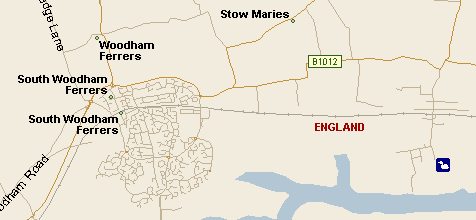Blue House Farm is a working farm, mainly coastal grazing marsh with an area in arable production. Most of the farm was originally saltmarsh until sea walls were constructed to reclaim land from the sea. It was then used as grazing pasture, this practice continuing today. Some of the higher, drier fields are used for crops and about 90 acres are in cereal production. The farm is a Site of Special Scientific Interest (SSSI) as part of the River Crouch marshes, notified for its wetland bird species and rare water beetles. It is within the Essex Coast Environmentally Sensitive Area (ESA) which encourages land owners to retain and recreate coastal pastures and where possible to increase areas of conservation wetlands.
Having recently acquired the site there is a lot of work to be done to realise its full potential for wildlife. Like most coastal grazing marsh the land was extensively drained for agriculture. The Essex Wildlife Trust will put in sluices to raise and control water levels, vital for the wildlife. The level of grazing is also critical for the characteristic wildlife, so the Trust must work towards a balance between good livestock farming and good conservation. It is also important to enable people to appreciate the farm so a new permissive footpath will be created giving access to bird hides overlooking the fleets (open water areas). This footpath will run behind one of the counter walls and together with the hides will minimise disturbance to wildlife. Wildlife and habitats The flat fields between the farmhouse and the sea wall are used in winter as a feeding ground by Brent geese. Over 2,000 geese are often seen together with large numbers of wigeon grazing on the short turf. Throughout the year hares are abundant and are most easily seen on these fields where cover is scarce. Skylarks also thrive, and are often heard singing high overhead in spring and summer. The fleets provide deep water which is important for diving birds including tufted duck and little grebe. Our smallest duck, the teal, and our largest, the shelduck, are both commonly seen. At high tide sea birds move on to the fleets from the mudflats beyond the sea wall. The creeks and ditches within the traditional grazing marsh are important habitats for rare water beetles and other water insects like the Hairy Dragonfly and Scarce Emerald Damselfly. Those with thick vegetation support water voles and may, in time, again give shelter to otters, known to have lived here at least until 1963. The marshy fields attract wading birds such as redshank, curlew and snipe which feed on creatures within the boggy ground. The saltmarsh and intertidal mud beyond the seawall provide abundant food for wading birds such as these and for oystercatchers and black-tailed godwit Like most coastal grazing marsh the land was extensively drained for agriculture. The Essex Wildlife Trust is putting in sluices to raise and control water levels, vital for the wildlife. The level of grazing is also critical, so we are working towards a balance between good ivestock farming and good conservation. Directions Take the B1012 east from S Woodham Ferrers and after about 3 miles turn right to North Fambridge. Access is via a track on the left off Fambridge Road 200 metres S of North Fambridge station. An hourly train service runs to North Fambridge via Wickford.
Opening Times Accessible at all times via public footpath along the seawall. A new permissive footpath is being created giving access to bird hides overlooking the fleets.Best Times to Visit Between mid-October and March for brent geese and wintering wildfowl. From April to June for breeding birds and for hares. If you would like to know whether paths or hides are open or you would like to join one of our regular walks to see more of the farm, then please telephone the Blue House Farm warden on (01621) 740687 or Essex Wildlife Trust on (01206) 729678. NOTE! Please take care to close gates behind you as this is a working farm as well as a nature reserve.
|
Page last updated:
Web Design Graham Mee. © Copyright of all pages South East Essex RSPB Local Group. All images copyright of owners
The Royal Society for the Protection of Birds. Registered charity no 207076




 With kind thanks to the Essex Wildlife Trust
With kind thanks to the Essex Wildlife Trust